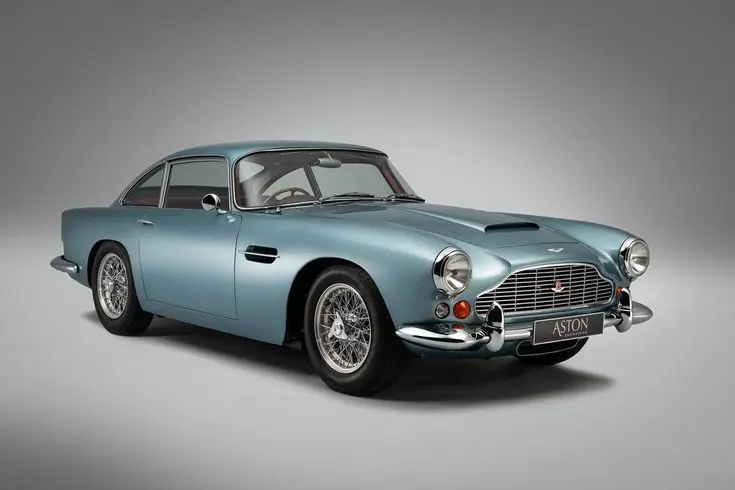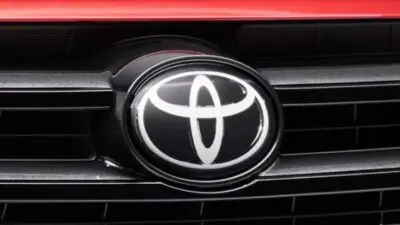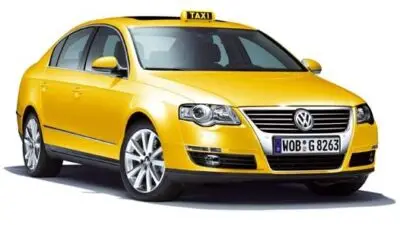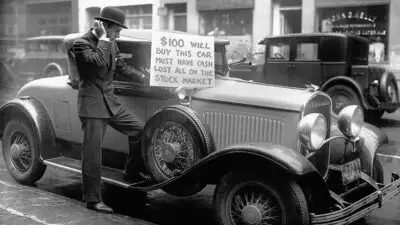Classic cars represent more than just vintage vehicles; they embody automotive history, craftsmanship, and exclusivity. These rolling masterpieces can command incredible prices when they cross the auction block, especially when they come with rare features or storied pasts.

The most expensive classic cars ever sold at auction have reached astonishing prices, with some models fetching well over $100 million. These record-breaking sales often involve legendary marques like Ferrari, Mercedes-Benz, and Rolls-Royce. The combination of rarity, historical significance, and pristine condition drives wealthy collectors to compete fiercely for these automotive treasures.
1) 1955 Mercedes-Benz 300 SLR Uhlenhaut Coupe

The 1955 Mercedes-Benz 300 SLR Uhlenhaut Coupe holds the prestigious title of the most expensive car ever sold at auction. This rare automotive masterpiece fetched an astonishing 135 million euros (approximately $143 million) when it was purchased by a private collector.
Named after its designer, Rudolf Uhlenhaut, this vehicle is exceptionally rare. Only two examples were ever manufactured, making it one of the most exclusive cars in existence.
The record-breaking sale took place in 2022 and dramatically surpassed the previous auction record. It exceeded the prior record by more than $95 million, demonstrating its extraordinary value to collectors.
Despite its enormous value, one of these remarkable coupes has been spotted casually cruising on public roads. This unusual sighting showcases the vehicle’s functional capabilities beyond its status as a museum piece.
The proceeds from this historic sale were used to establish the Mercedes-Benz Fund, which supports educational and research scholarships focusing on environmental science and decarbonization.
2) 1962 Ferrari 250 GTO

The 1962 Ferrari 250 GTO stands as one of the most valuable automobiles ever sold. This legendary race car has repeatedly broken auction records, with examples selling for astronomical sums.
In 2018, a 1962 Ferrari 250 GTO set a record through a private sale of $70 million, making it the most expensive car transaction in history at that time.
At public auctions, these rare vehicles continue to command incredible prices. In 2023, a 1962 Ferrari 330 LM / 250 GTO by Scaglietti sold for $51.7 million at a Sotheby’s auction in New York City.
Another pair of 1962 Ferrari 250 GTOs sold for $39.6 million and $48.4 million respectively, securing positions among the most expensive Ferraris ever sold.
When new, this iconic vehicle cost just $18,000 in the United States, with buyers personally approved by Enzo Ferrari himself and his North American dealer, Luigi Chinetti.
The 250 GTO’s immense value stems from its rarity, racing heritage, and its status as what many consider the ultimate Ferrari collector’s car.
3) 1935 Duesenberg SSJ

The 1935 Duesenberg SSJ holds the prestigious title of being the most expensive American car ever sold at auction. This remarkable vehicle fetched an astounding $22 million when it went under the hammer at a Gooding & Company auction.
What makes this particular Duesenberg so valuable is its prestigious provenance. This specific SSJ was once owned by Hollywood star Gary Cooper, adding significant celebrity appeal to its already impressive engineering.
The SSJ was a true American supercar of its era. With its powerful engine and sleek design, it represented the pinnacle of automotive luxury and performance during the 1930s.
Only two SSJ models were ever produced, making this an extremely rare collector’s item. The scarcity factor contributed substantially to its record-breaking price tag.
The sale occurred in August 2016 and firmly established the Duesenberg brand’s importance in automotive history. The SSJ’s value demonstrates how classic American engineering can command extraordinary prices in the collector car market.
The Duesenberg SSJ continues to be celebrated for its historical significance, engineering excellence, and as a symbol of American automotive achievement.
4) 1954 Mercedes-Benz W196 R

The 1954 Mercedes-Benz W196 R has earned its place among the most valuable cars ever sold at auction. This legendary Grand Prix racing car recently sold for an astonishing €51 million (approximately $54 million USD), making it the second most expensive car ever sold at auction.
This particular W196 R is a streamliner version, also known as the “Stromlinienwagen.” The car has an impressive racing heritage, having been driven by legendary drivers including Juan Manuel Fangio and Sir Stirling Moss during the 1954 Formula One season.
The record-breaking sale included a 10% auction fee and a 19% value-added tax on top of the hammer price. This makes it not only the most valuable Grand Prix car ever sold but also one of the most significant automotive auction events in recent history.
Mercedes-Benz produced the W196 R for the 1954-1955 Formula One seasons, during which it dominated competitions. The proceeds from this historic sale went to benefit the Indianapolis Museum, adding a philanthropic dimension to this remarkable transaction.
5) 1962 Ferrari 330 LM/250 GTO

The 1962 Ferrari 330 LM/250 GTO by Scaglietti stands as one of the most valuable automobiles ever sold at auction. In November 2023, this remarkable vehicle sold for $51.7 million at a Sotheby’s auction in New York, securing its place as the second most expensive car ever sold at auction.
This particular GTO has an impressive racing pedigree. It is the only GTO Tipo 1962 raced by Scuderia Ferrari and achieved a class win and 2nd overall finish at the 1962 Nürburgring 1000 KM. The car was driven by notable racers Mike Parkes and Lorenzo.
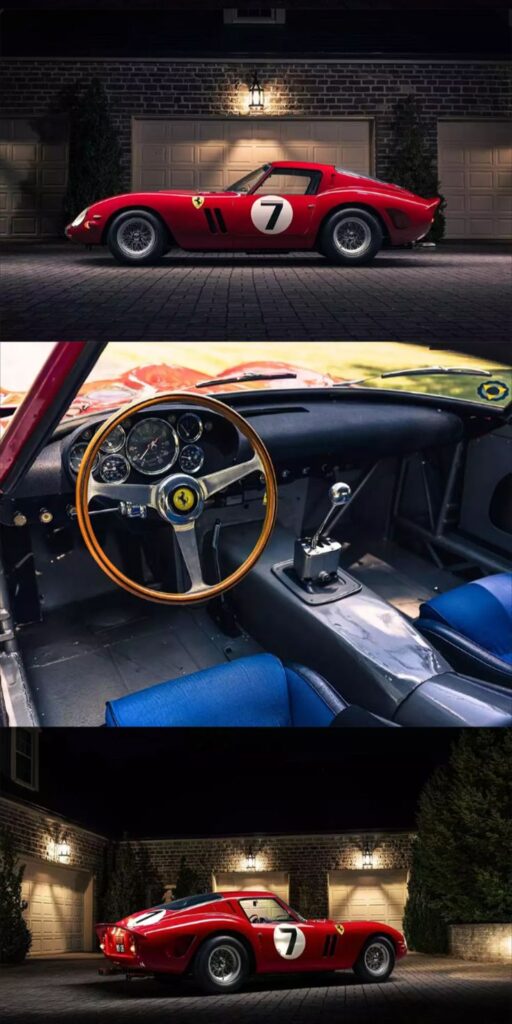
What makes this Ferrari especially unique is its racing history at Le Mans. The vehicle competed at the legendary French endurance race, adding to its historical significance and value.
The 330 LM/250 GTO represents the pinnacle of Ferrari’s early 1960s racing technology. Its combination of elegant Scaglietti coachwork and competition success has cemented its status as one of the most coveted collector cars in existence.
6) 1904 Rolls-Royce 10 hp Two-Seater

The 1904 Rolls-Royce 10 hp Two-Seater holds the distinction of being the oldest surviving Rolls-Royce in the world. This historic vehicle sold for an impressive 3,521,500 GBP (approximately $7.3 million) at a Bonhams auction in December 2007, breaking world records at the time.
The car represents the very beginning of the legendary Rolls-Royce partnership. Only 17 of these early automobiles were built when the two companies, Rolls and Royce, first teamed up in their collaboration.
This modest yet historically significant vehicle was powered by a 1.8-liter twin-cylinder engine producing just 10 horsepower. Despite its humble power output, the car’s importance to automotive history makes it extraordinarily valuable.
The 10 hp model was displayed at the Paris Salon in December 1904, alongside the company’s 15 hp and 20 hp cars. It was also exhibited at the 1905 Olympia Motor Exhibition.
When it was new, the Rolls-Royce 10 hp was priced at £395, a significant sum in its day. Today, its status as the car that “started everything for Rolls-Royce” justifies its multi-million dollar valuation.
7) 2018 Ferrari 250 GTO

The Ferrari 250 GTO holds a special place in automotive history as one of the most coveted collector cars ever made. In 2018, a silver blue Ferrari 250 GTO broke records when it sold for $70.2 million in a private sale.
This particular 250 GTO was noteworthy for its pristine condition. It had never been crashed, which meant it didn’t require any restoration work. This factor significantly contributed to its extraordinary value.
The 250 GTO’s astronomical price tag secured its position as the most expensive vehicle ever sold at that time. Only 36 examples of the Ferrari 250 GTO were ever produced between 1962 and 1964, making it extremely rare.
This record-breaking sale demonstrates the immense value collectors place on Ferrari’s racing heritage. The 250 GTO was originally designed as a race car and competed in events such as the 24 Hours of Le Mans.
The car’s combination of racing pedigree, limited production numbers, and pristine condition created the perfect formula for this record-setting auction result. Its sale confirms the 250 GTO’s status as the crown jewel of Ferrari collecting.
8) 1967 Ferrari 275 GTB/4*S N.A.R.T. Spider

The 1967 Ferrari 275 GTB/4*S N.A.R.T. Spider stands as one of the most coveted classic cars in automotive history. Only 10 of these remarkable vehicles were ever produced, making it extremely rare.
In 2013, one of these exceptional cars sold for a staggering $27.5 million at auction. This particular N.A.R.T. Spider belonged to Eddie Smith, who had purchased it new and owned it for decades until his passing.
The car’s story is particularly touching. Eddie Smith had only $15 when he left the orphanage he grew up in. His family later sold his prized Ferrari for millions at a Pebble Beach auction.
The N.A.R.T. Spider gained additional fame by appearing in “The Thomas Crown Affair,” which boosted its cultural significance. Its elegant Scaglietti-designed body combines beauty and performance in perfect harmony.
The acronym N.A.R.T. stands for North American Racing Team, which was led by Luigi Chinetti, Ferrari’s North American importer. He specifically requested these convertible versions of the already desirable 275 GTB/4.
The car continues to rank among the top ten most expensive cars sold worldwide, cementing its status as an automotive icon.
9) 1956 Aston Martin DBR1

The 1956 Aston Martin DBR1 holds the prestigious title of the most expensive British car ever sold at auction. This remarkable vehicle fetched an incredible £17.5 million (approximately $22.5 million) when it went under the hammer in 2017.
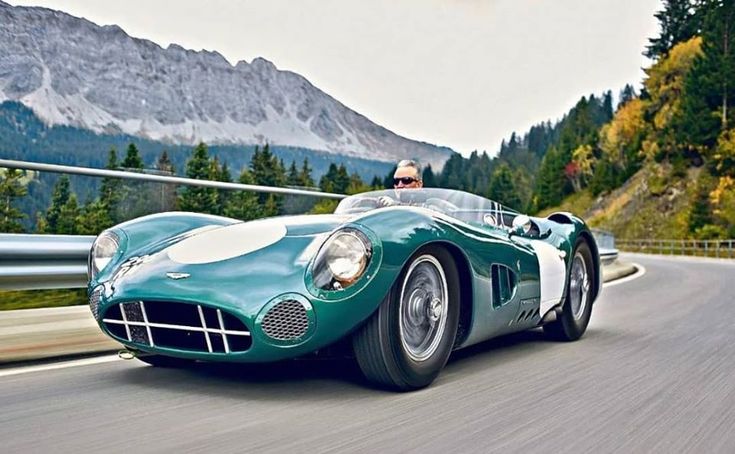
Known for its distinctive frog green color and wide-mouthed grille, the DBR1 stands out among classic cars with undeniable character. It represents a pinnacle in British automotive engineering and racing heritage.
Automotive experts consider the DBR1 to be arguably the most important Aston Martin ever built. Its historical significance cannot be overstated in the world of classic cars and racing.
The record-breaking sale took place on December 8, 2018 at an RM Sotheby’s auction. The DBR1’s extraordinary price tag reflects both its rarity and its status as an automotive icon.
This particular model, designated as DBR1/1, represents the pinnacle of Aston Martin’s racing pedigree. Its combination of engineering excellence, racing history, and brand prestige justifies its position among the world’s most valuable automobiles.
10) 1931 Bugatti Type 41 Royale Kellner Coupe

The 1931 Bugatti Type 41 Royale Kellner Coupe stands as one of the most prestigious classic cars ever made. In 1987, it set a world record when it sold for £4.7 million at auction, cementing its place in automotive history.
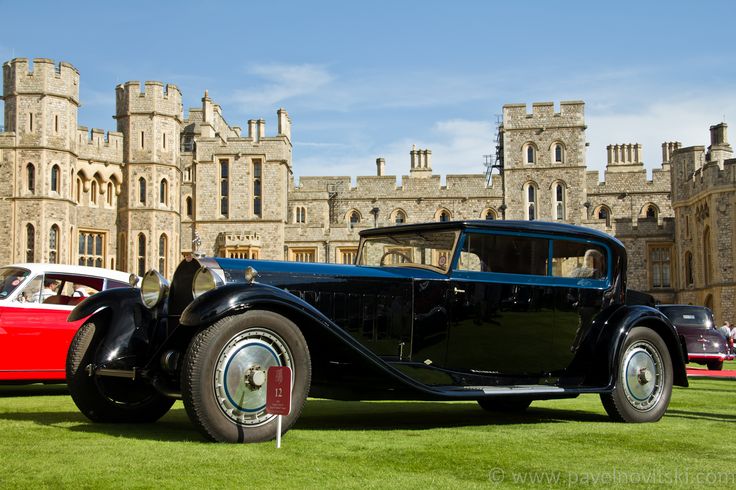
This magnificent vehicle was designed to be the ultimate luxury automobile. It surpassed the length of a Duesenberg and boasted twice the horsepower of a Rolls-Royce of its era.
The Type 41 Royale was not just powerful but also incredibly expensive for its time. It cost more than a Duesenberg and a Rolls-Royce put together, making it accessible only to the wealthiest buyers.
Reports indicate that a car dealer later paid approximately $9.8 million for this exceptional Bugatti. This impressive figure reflects the car’s rarity and historical significance.
The Royale represented Ettore Bugatti’s vision of automotive excellence and exclusivity. With its imposing presence and engineering marvels, it remains a testament to the golden age of luxury automobiles.
Only a handful of these magnificent machines were ever produced, making each surviving example a treasured piece of automotive history.
Factors Influencing Classic Car Prices

The value of classic cars hinges on several critical elements that collectors and investors carefully evaluate. These aspects can dramatically shift prices from thousands to millions of dollars depending on their specific characteristics.
Rarity and Production Numbers
The scarcity of a classic car significantly impacts its market value. Limited production runs create higher demand among collectors, driving prices upward. For example, vehicles with only a few hundred units manufactured typically command premium prices in the collector market.
Rarity is the biggest factor in determining value, with some ultra-rare models fetching extraordinary sums. The Ferrari 250 GTO, with only 36 ever produced, consistently ranks among the most expensive cars at auction.
Special editions, limited releases, and discontinued models often appreciate faster than their mass-produced counterparts. Cars with unique specifications or factory options can also increase in value significantly.
Production numbers matter particularly in prestigious marques like Aston Martin, Bugatti, and certain Ferrari models where exclusivity was built into the manufacturing strategy.
Historical Significance
Classic cars with rich history and notable provenance tend to fetch higher prices at auction. Vehicles previously owned by celebrities, historical figures, or featured in films often sell for multiples of their standard market value.
Racing heritage creates substantial value premiums. Cars with documented competition history, especially those with significant wins at prestigious events like Le Mans or Monaco Grand Prix, attract serious collectors.
Technological innovations also contribute to historical importance. Models that introduced groundbreaking features or represented pivotal moments in automotive design history command respect and higher valuations.
Cultural impact matters too. Cars that defined an era or became cultural icons—like the ’57 Chevy Bel Air or ’65 Ford Mustang—maintain strong appeal regardless of production numbers.
Condition and Restoration
The physical state of a classic car often determines 50-70% of its value. Vehicles in original, unrestored condition with low mileage (known as “survivors”) have become increasingly desirable in recent years.
Restoration quality significantly impacts pricing. Professional, historically accurate restorations using correct parts and materials can dramatically increase a car’s value. Documentation of the restoration process, including photographs and receipts, provides crucial provenance.
Originality presents a complex value proposition. Numbers-matching cars (with original engine and major components) typically command premium prices. Even small details like factory paint codes and original interior materials affect valuation.
Maintenance history and documentation provide evidence of proper care. Complete service records, owner’s manuals, and factory tools contribute positively to a classic car’s overall value assessment.
Classic Car Auction Houses

The high-end classic car market operates through specialized auction houses that connect rare vehicles with wealthy collectors. These prestigious events not only facilitate record-breaking sales but also create environments where ownership history can dramatically influence final prices.
Role of Major Auctions
Major auction houses like RM Sotheby’s, Gooding & Company, and Bonhams dominate the classic car market. These institutions provide authentication services, extensive marketing, and global reach to attract serious buyers for rare automobiles.
Each auction house specializes in different vehicle categories. RM Sotheby’s frequently handles Ferrari sales, while Bonhams has a strong track record with pre-war classics. Gooding & Company often secures prestigious estate collections.
The auction environment creates competitive bidding that can drive prices to extraordinary levels. The 1955 Mercedes-Benz 300 SLR “Uhlenhaut Coupe” sold for $142 million in 2022, becoming the most expensive car ever auctioned.
Auction timing also matters significantly. Events paired with prestigious car shows like Pebble Beach Concours d’Elegance typically command higher prices due to the concentration of serious collectors.
Impact of Celebrity Ownership
Celebrity provenance can dramatically increase a classic car’s value at auction. Vehicles owned by famous figures carry a premium beyond their inherent worth due to the compelling narrative they represent.
Racing icons’ cars perform exceptionally well. Vehicles driven by Formula 1 champions or renowned drivers like Stirling Moss regularly command premium prices. The historical significance of these connections creates bidding wars among passionate collectors.
Hollywood connections similarly boost values. Steve McQueen’s vehicles consistently sell for multiples of their standard market value, while cars from famous films generate intense interest.
Royal and political ownership histories also elevate prices substantially. Cars with documented ownership by heads of state or royalty gain a historical significance that transcends their automotive specifications.
This “celebrity effect” explains why two seemingly identical classic cars can sell for dramatically different prices at auction depending on who previously sat behind the wheel.
Frequently Asked Questions

Classic car auctions continue to break records with extraordinary sales figures as rare models change hands for staggering amounts. Key factors like rarity, historical significance, and provenance drive these astronomical values.
Which classic car holds the record for the highest auction sale price?
The 1955 Mercedes-Benz 300 SLR Uhlenhaut Coupe currently holds the record for the most expensive car ever sold at auction. This remarkable vehicle sold for an astounding $143 million in 2022.
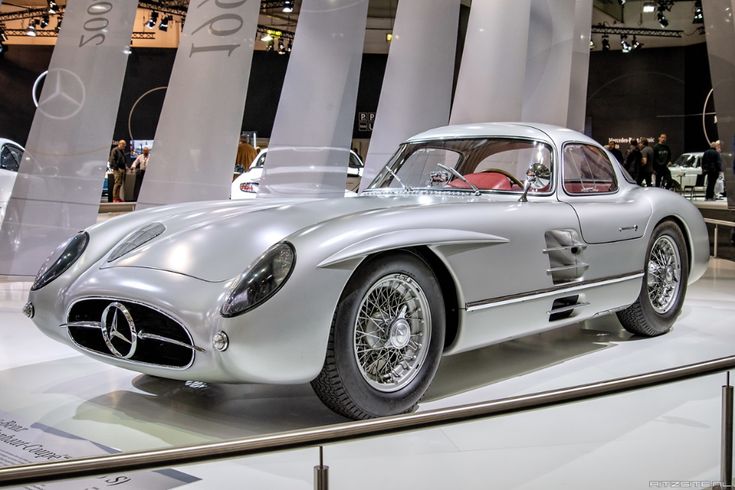
The Uhlenhaut Coupe is one of only two ever made. Its rarity, engineering excellence, and racing pedigree contributed to its record-breaking price.
What are the top 10 most valuable classic cars sold at auction?
The top auction sales are dominated by rare European sports cars. The list includes seven Ferraris, two Mercedes-Benzes, and an Aston Martin.
Following the Uhlenhaut Coupe are the 1962 Ferrari 330 LM/250 GTO at $51.7 million and another Ferrari 250 GTO at $48.4 million. The 1954 Mercedes-Benz W196 R and 1935 Duesenberg SSJ also rank among the most valuable cars ever auctioned.
How have classic car auction prices changed over the years?
Classic car values have increased dramatically over the past few decades. What once sold for thousands now commands millions at prestigious auctions.
In 2018, a 1963 Ferrari 250 GTO sold privately for $70 million, setting a record at that time. The market continues to grow as wealthy collectors compete for the rarest and most significant automobiles.
Which factors contribute to the high value of the most expensive classic cars?
Rarity stands as the primary value driver, with one-offs or limited production runs commanding the highest prices. Historical significance, especially racing success, substantially increases value.
Provenance and ownership history play crucial roles. Cars owned by celebrities or with documented racing history by famous drivers fetch premium prices.
Originality and condition matter tremendously. Vehicles with original components and documented restoration histories typically sell for more than heavily modified examples.
What makes classic cars such a significant investment compared to modern cars?
Classic cars offer tangible assets that typically appreciate over time, unlike modern vehicles that depreciate immediately. They represent physical investments that can be enjoyed while potentially growing in value.
The finite supply of historic automobiles ensures continued demand. As time passes, fewer examples of significant models remain in collectable condition.
Classic cars also offer emotional value beyond financial returns. They connect owners to automotive history and provide experiences that modern cars cannot replicate.
Which brands tend to dominate the list of most expensive classic cars sold?
Ferrari consistently dominates the list of most expensive auction sales. The Italian manufacturer accounts for seven of the top ten most valuable cars ever sold at auction.
Mercedes-Benz holds two positions including the current record holder. Other brands occasionally appearing in top sales include Aston Martin, Bugatti, and Alfa Romeo.
The 250 GTO model from Ferrari appears multiple times among the most expensive cars ever sold, highlighting its particular significance to collectors and investors.
